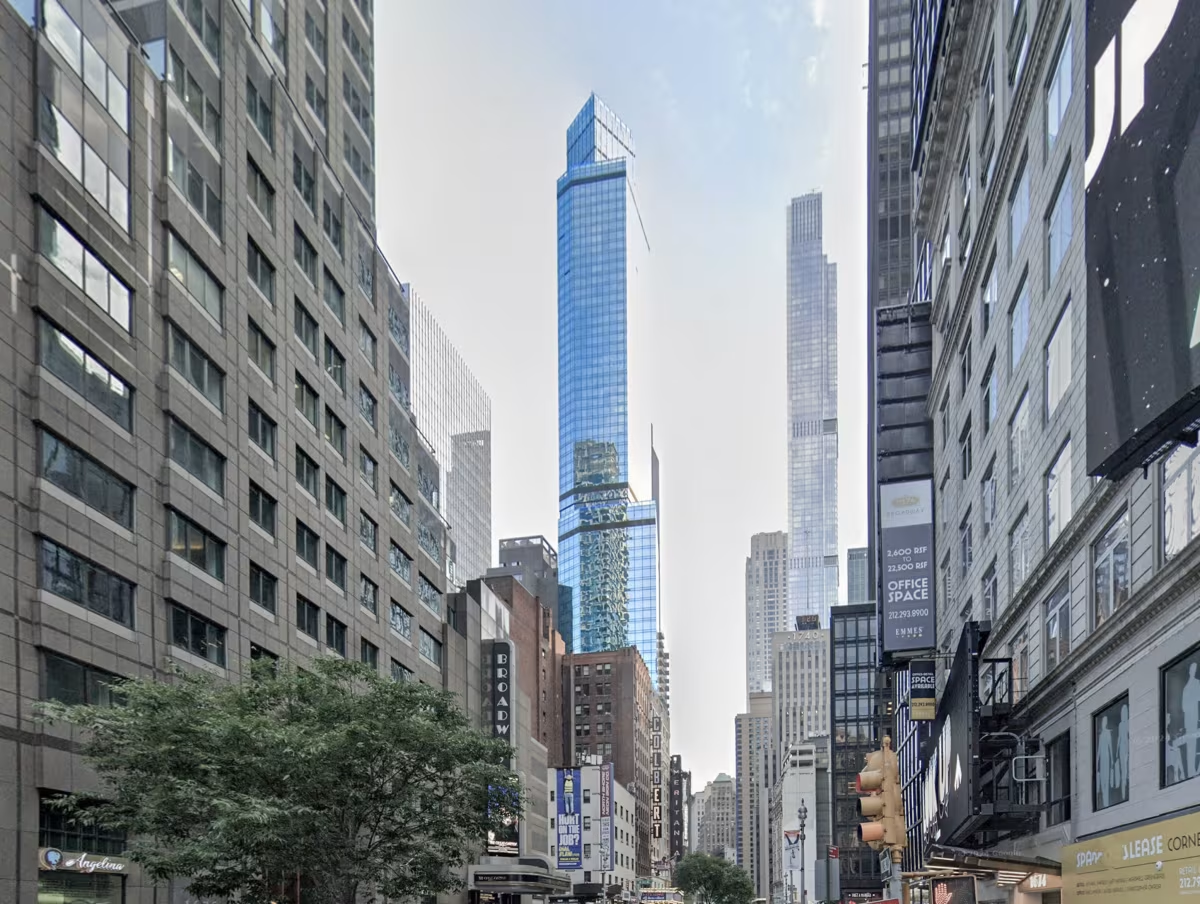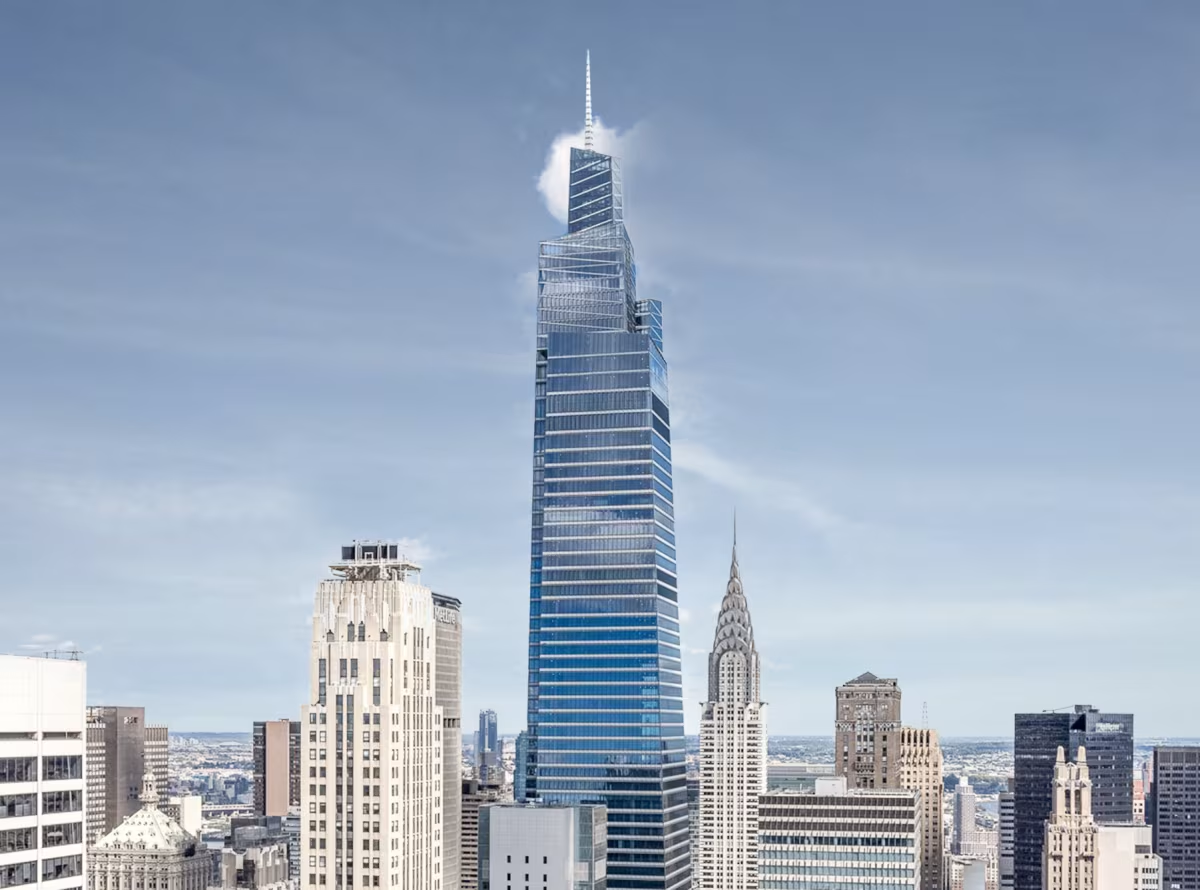1717 Broadway Building vs One Vanderbilt


Comparing the 1717 Broadway Building and the One Vanderbilt is interesting because they both rise in New York, NY, yet they were conceived by two different design teams, Nobutaka Ashihara and Kohn Pedersen Fox Associates, and were completed at different points in time. They were finished more than 7 years apart.
This contrast within the same city allows us to see how different creative minds interpreted the evolving needs of New York across time.
Let's take a closer look!
Height & Size
These two towers present an interesting contrast in their proportions. The One Vanderbilt rises higher at 1401ft (427m), while the 1717 Broadway Building reaches 715ft (218m). However, the 1717 Broadway Building accommodates more floors with 68 levels above ground, compared to 67 floors in the One Vanderbilt.
This suggests different approaches to interior space design. The One Vanderbilt has an average floor-to-floor height of approximately 6.4m, while the 1717 Broadway Building has more compact floors averaging around 3.2m each. The taller building's more generous floor heights might indicate grander interior spaces, higher ceilings, or different programmatic requirements.
These different proportions likely reflect the specific needs each building was designed to serve, whether driven by zoning regulations, client requirements, or the intended use of the spaces within. The contrast shows how architects can achieve different spatial experiences even when working with similar overall building scales.
Architectural Style
Both the 1717 Broadway Building and the One Vanderbilt were designed in line with the aesthetic conventions of the Contemporary style.
At the time, this style was at the height of its popularity. So both Nobutaka Ashihara and Kohn Pedersen Fox Associates followed what was in many ways expected of them, producing designs that fit comfortably within contemporary architectural norms, rather than breaking with convention.
Uses
The 1717 Broadway Building is primarily hotel, while the One Vanderbilt is primarily commercial.
The 1717 Broadway Building incorporates a 4-star hotel with 639 rooms. More information is available at the official website.
Structure & Facade
The two towers rely on different structural systems, reflecting distinct engineering strategies.
The 1717 Broadway Building uses a Frame structural system, which relies on a regular grid of columns and beams to sustain its weight, while the One Vanderbilt uses a Trussed Frame system, that uses diagonal bracing in addition to beams and columns for stability.
Yet, when it comes to their facade, they both employed the same solution, a Curtain Wall facade.
A curtain wall is a non-load-bearing facade hung from the structural frame. It is anchored to floor slabs and transfers only its own weight and wind loads, allowing for sleek, glassy exteriors.
| 1717 Broadway Building | One Vanderbilt | |
|---|---|---|
| Nobutaka Ashihara | Architect | Kohn Pedersen Fox Associates |
| 2004 | Design Ended | 2016 |
| 2011 | Construction Started | 2017 |
| 2013 | Year Completed | 2020 |
| Contemporary | Architectural Style | Contemporary |
| Hotel | Current Use | Commercial |
| 68 | Floors Above Ground | 67 |
| 218 m | Height (m) | 427 m |
| 230 | Tip Height | 427 |
| Frame | Structure Type | Trussed Frame |
| Reinforced Concrete | Vertical Structure Material | Steel |
| Concrete, And Steel | Horizontal Structure Material | Poured Concrete Over Metal Decking |
| No | Facade Structural? | No |
| Steel, Glass | Main Facade Material | Aluminium, Glass, Terracotta |
| Fujitec America | Elevator Company | Schindler |
| Edwards & Zuck PC | MEP Engineer | Jaros Baum & Bolles |
| WSP Group | Structural Engineer | Severud Associates Consulting Engineers |
| Permasteelisa Group | Facade Consultant | Vidaris |
| Bill Rooney Studio Inc. | Interior Designer | Gensler |
| NY | State | NY |
| New York | City | New York |
| 1717 Broadway | Address | 1 Vanderbilt Avenue |